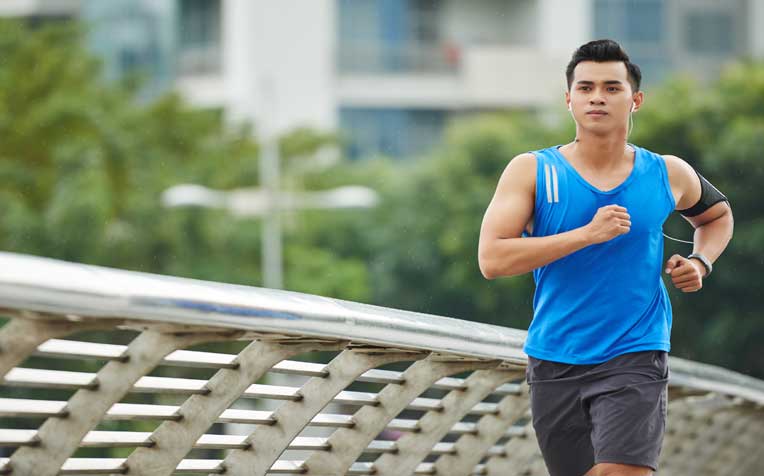
As a whole, the benefits of exercising far outweigh the risks of inhaling pollutants.
Are you concerned about the toxic vehicle emissions you might be inhaling whilst going about your daily activities, such as jogging, waiting at the bus stop or pumping petrol?
The Department of Respiratory and Critical Care Medicine at Singapore General Hospital (SGH), a member of the SingHealth group tells you what you need to know.
Do we inhale more pollutants when exercising?
A sedentary person inhales about 6-10 litres of air per minute. When doing heavy aerobic exercise, we can draw in at least 10 times that amount, and the air goes deeper into the lungs. We also tend to breathe in through the mouth, which bypasses the little brush-like filters present in our nose. But, as a whole, the benefits of exercising far outweigh the risks of inhaling pollutants.
Is it better to jog at certain places or during certain times of the day to benefit from better air quality?
During the typical peak hours of 8-9 am and 5-7pm, there are more vehicles on the roads, which collectively emit more exhaust fumes, including carbon monoxide, than at other hours of the day. If only for road safety, joggers would be better off exercising in designated parks and recreational areas. However, air quality in Singapore generally remains in the “good” range based on PSI readings (see below).Special tip: If you can't make it to the park, why not just jog on an inner road, rather than the main road?
How worrisome are vehicle emissions for my health?
The usage of modern catalytic converters has largely reduced the carbon monoxide emissions from vehicles. In an open space, such as a bus stop, this exposure is generally not an issue as the harmful gases will not build up to a sufficiently high level to cause problems.
However, in enclosed areas, such as garages, the level of carbon monoxide can build up to significant levels. Pregnant women and those who have underlying cardio-respiratory disease should avoid leaving the engine running or having a prolonged presence in such enclosed areas.
When pumping petrol, should you turn off the engine to inhale less benzene?
Turning off the car engine does not make a difference to the risk of inhaling benzene. The concentration of benzene from pumping gas is very low and the risk of significant exposure from this activity alone is almost negligible. This is mainly a fire safety issue: The gas vapour may come into contact with sparks from the ignition and trigger an explosion, though it is rare.
The main source of benzene inhalation is actually from cigarette smoke exposure. The latter has been linked to leukaemia, as well as to lung cancer.
What is PSI?
The acronym PSI stands for pollution standards index. It is a system measuring air quality, on a scale from 0 to 500. A PSI between 0 and 50 indicates no general health effects. From 101, air quality is considered “unhealthy”, and from 301, “hazardous”. In the six months spanning December 2010 to May 2011, authorities registered seven days with a PSI over 50, the worst rating being 60.Do check the National Environment Agency's website (http://app2.nea.gov.sg/psi.aspx) for the latest PSI readings if you suffer from asthma.
Ref: U11


















 Get it on Google Play
Get it on Google Play